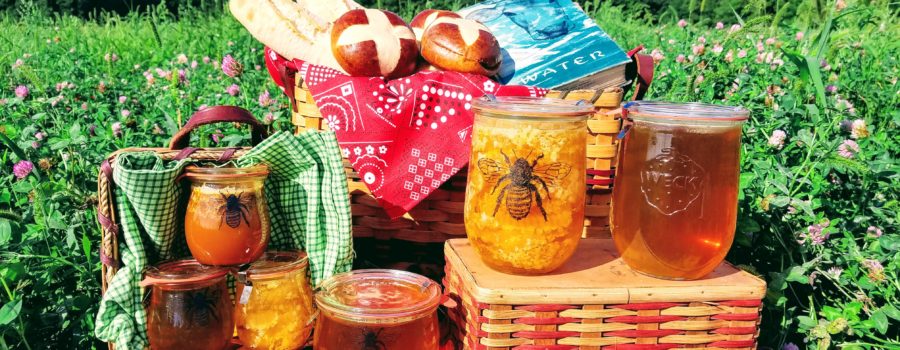When it comes to food and drink, taste and flavor are two things that are always on my mind. Yes, I know this sounds a little obsessive – BUT, growing up on the farm, there were a couple things you could always count on and look forward to: 1) ‘a FULL BELLY’ as my father would always say, and 2) a TABLE BURSTING with FLAVOR.
So, late last year, as I enthusiastically dined and admired the delicious cornucopia of local food around the table surrounded by new acquaintances from universities all across the country, in a sputter I bravely whispered to the person on my right…
I discovered this perfect word that describes it (the meal) perfectly…Terr…TERR…TERRIER!
I barked the word out pronounced like the breed of dog that yaps at your feet, and was bred to hunt vermin.
Whatever elegance the word had, was stolen in an instant. She smiled, looking a little puzzled. ‘Terrier? Hmmm…OH, you must mean TERROIR (tehr·waar)!’ she pronounced in a beautifully, chiseled French accent.
‘YES! That’s the word!’ I exclaimed and we roared with laughter.
Words. French words. Fancy other words. This was not the first time I mispronounced a word surrounded by a bunch of people that knew their Latin well. But it goes to show, you don’t have to say the words right to perfectly understand, feel, and connect with their meaning. Terroir is one of those words I recently stumbled upon that instantly shot through my heart and brain like an arrow.

This word, terroir from the Latin ‘terre’ meaning ‘from land,’ transcends the basic concepts of taste and flavor by taking into consideration the unique climate, farming practices, and habitat in which the food is grown. A ‘Taste of Place’ is what this word describes.
Early on as a child, I quickly recognized that our kitchen and dining table were the places to be. And, that wasn’t just for our family, but neighbors and friends would also sniff and nibble around our richly abundant eating place. People raved about how DELICIOUS and FLAVORFUL the food was as they devoured their plates in a frenzy.
Food doesn’t taste like this from the grocery store!’ ‘It’s SOOOOOO GOOOOD!
They all said, and they were right – the food at our table didn’t come from the grocery store and it did taste different.

The concept of terroir was developed over centuries by French winemakers observing the difference in wines from different regions, vineyards, or even within the different sections of the same vineyard. This view of food based on terroir has grown into a means of protecting, preserving, and promoting artisanal practices and regional identities, while cherishing the unique tastes of the landscape.
You don’t have to be a wine connoisseur to notice and appreciate these defining characters in other foods. Visit a local farmer’s market and talk to a shopper, and they will gladly share why they choose particular venders for fresh ingredients over others, it’s the ‘flavor, practices, region, etc.’

With increased industrialization of agriculture, the regional culture, environment, habitat, practices, and flavors that define small family farms are lost. Industrialization consciously rejects crop variation and nuance, for the ONE optimal shape, smell, and flavor bullseye that can be mass-produced. More and more and MORE cheap food is the goal. Placeless and faceless foods and beverages are available for people everywhere.
Think about all the soybeans and corn that are grown in the Midwest, do you know where those crops go? It wasn’t so long ago, that farms in the Midwest grew more than just one or two commodities (e.g. corn and/or soybeans), there were many different types of farms, farming practices, and farmers.

The humble ingredients at our family’s table came from the unique land and the touch of our hands. Dedication to cultivating nutrient dense soils, and both the curiosity and love in exploring diverse crop varieties and sustainable farming practices contributed to the richness in flavor. Sourdough buckwheat cakes and ‘bloody butcher’ red cornbread from a cast iron skillet; rich, dense whole-grain breads with a mixture of hard red wheat, soft pastry wheat, and spelt flour. So many different types of organic grains all grown on the same family farm.

There is flavor, surprise, and genuine wonder to be found everywhere! One must only pay a little more attention, and dig in a little deeper to the work. Perhaps, nothing displays the terroir and taste of place better than the raw honey from our beehives. The honey bees capture the rich variety of organic crops, hedges, and woodlands across the landscape from which they forage. Just look at the colors of honey! All this seasonal, varietal flavor from the same small farm in southwestern Michigan.
It may sound quaint and old-fashioned, but getting back to smaller-scale, family farm operations sounds delicious. Not only can these practices foster more variety and flavor that connects directly to the eater, they also encourage sustainable and regenerative methods that preserve diversity across the landscape. Imagine a regional food supply where the many generations of effort, experience, and dedication to cultivating food express the idiosyncrasies of place – the terroir.
As we head into this new decade, it is CLEAR we must consume LESS on all levels. As we deepen into this idea of living with less, perhaps, we rediscover MORE in our food with the richness of terroir and a ‘taste of place.’ Take it from the great architect Mies van der Rohe, ‘Less is MORE.’
Eat well, my friends,
Virginia







1 Comment
Leave your reply.